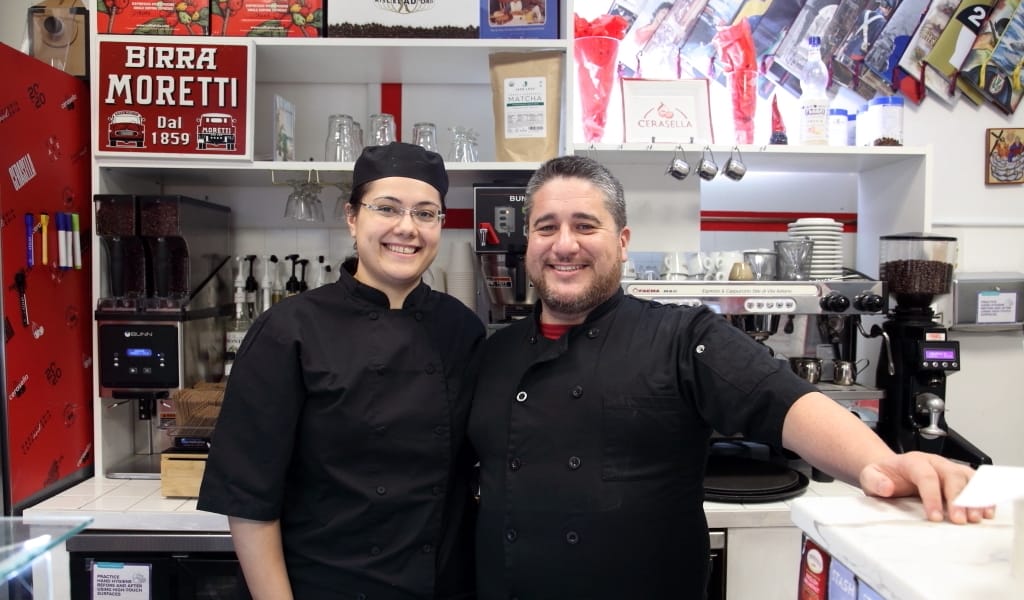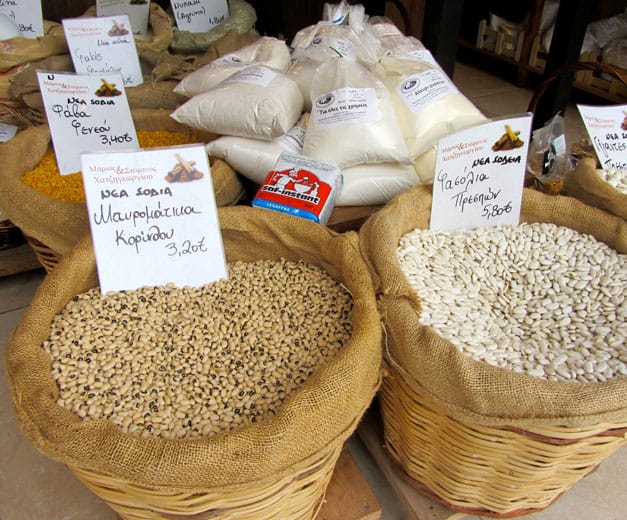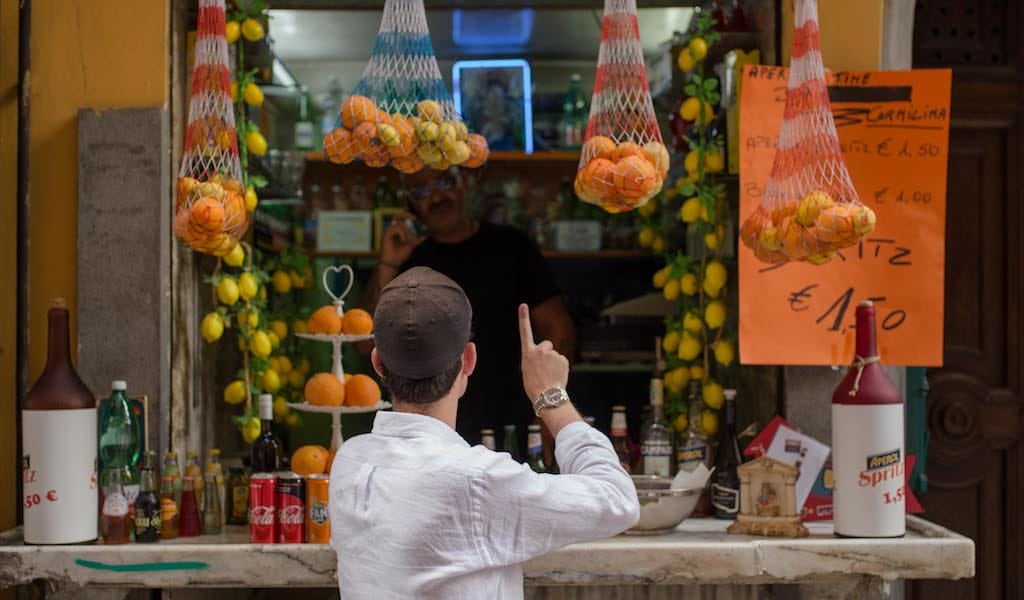In Italy, “we would call this a bar,” Caterina Pepe tells us. We’re chatting inside Cerasella (pronounced “Chair-ah-Sell-ah”), the small pasticceria e caffetteria she owns with her husband, Luca Schiano, not far from their home in Long Island City. In New York, of course, a bar is typically adults-only, and rarely known for its food. Using that name for Cerasella, Caterina adds, would lead New Yorkers astray – but happily so, once they found themselves in front of the pastry case. Caterina and Luca have adopted the term caffeteria instead, to perfectly describe Cerasella: a meeting place for friends and family, suitable for all ages, that serves coffee, breakfast, snacks and sandwiches.
Luca, 35, and Caterina, 28, were both born near the Amalfi Coast, in Naples and Montecorvino Rovella, respectively. In Italy, however, their paths never crossed. Caterina moved to New York in 2014, and Luca, in 2018; they were introduced by friends a year later. By that time Caterina, who had studied food chemistry in school, was applying her studies to the fullest as the pastry chef at the Upper East Side restaurant Caravaggio.
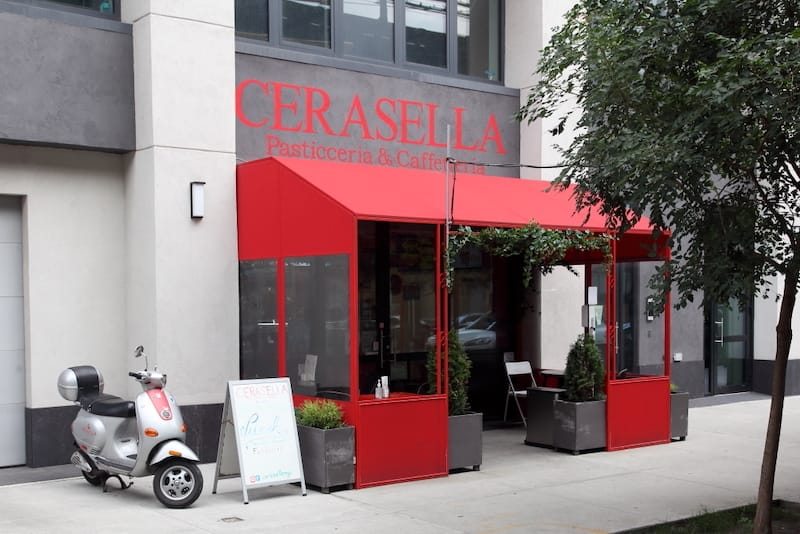
Luca had opened and managed restaurants in Italy and the United Kingdom, but Cerasella (“little cherry,” in the Neapolitan dialect) would be his first in the United States. The young couple soon set a wedding date, then pushed back their wedding so they could open their shop in March 2020 – only to be sidelined, like most of New York, by the arrival of Covid-19.
Cerasella opened that July. Luca and Caterina finally married in September 2021, after most pandemic restrictions had been relaxed, but even then they had to abandon their rooftop venue in the face of an imminent hurricane. Still and all, Caterina made her own wedding cake.
Nowadays, although Caterina does accept orders for special-occasion confections, Cerasella thrives on the patronage of regular customers who stop in for an everyday treat – a coffee, a pastry or both. On weekday mornings, Luca explains, the customers tend to be English speakers on the way to work, while on the weekend, many Italians visit from Brooklyn or other parts of the city.
During our recent visit – on a weekday, in the middle of a supposedly “quiet” afternoon enlivened by the sounds of Italian online radio – we witnessed a constant parade of regulars, including one couple who tells us they come here from New Jersey twice a week, just for the coffee.
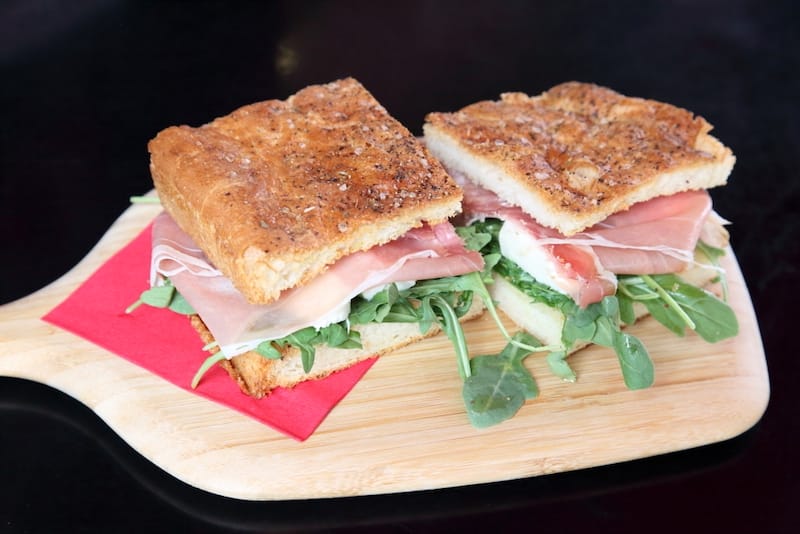
For our part, we had our eyes on lunch. From the focaccia menu, we feasted on a sandwich layered with prosciutto di Parma, fresh mozzarella and arugula drizzled with a lemon dressing. In short order we followed with an exquisite sfogliatella riccia made with Neapolitan semolina, Calabrian orange and Apulian buffalo ricotta, coupled with an espresso. And a glass of water – “we always serve [espresso] with a glass of water” to freshen the mouth, Caterina explains.
About 80 percent of Cerasella’s ingredients are imported, she continues, and so supply-chain issues became a particularly knotty problem at the height of the pandemic. Pistachios, she adds (while treating us to another, small pastry) were missing in action for four months. In general, she reports that imports have been getting better lately.
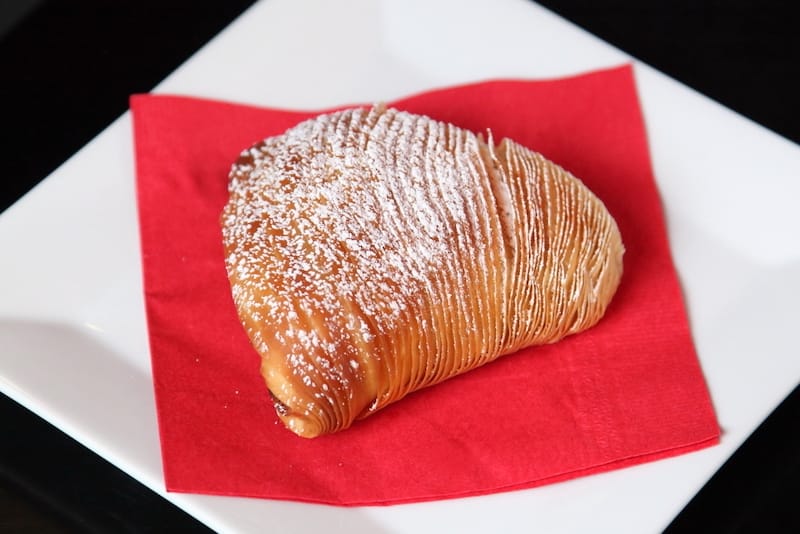
Based on last year’s Thanksgiving season, Caterina expects this year’s to be “crazy busy.” Most likely she’ll be making pecan pie and pumpkin pie, as well as a cheesecake featuring fresh butternut squash. Shops that offer too many seasonal specials, Luca interjects, often can’t maintain high quality across the board. For any given holiday, he continues, Cerasella will prepare only two or three special items.
True, Caterina’s daily repertoire is already extensive, and, according to Luca, for at least one item it’s unique. Cerasella, he maintains, is the “only pastry shop in New York” that makes its own delizia al limone, a dome of lemon sponge cake wrapped in a lemon glaze and filled with lemon cream – hence the name, literally “lemon delight.” It’s lovely, and it’s delicious, yet still Luca was surprised, early last year, when “people began ordering six, eight, twelve at a time.”
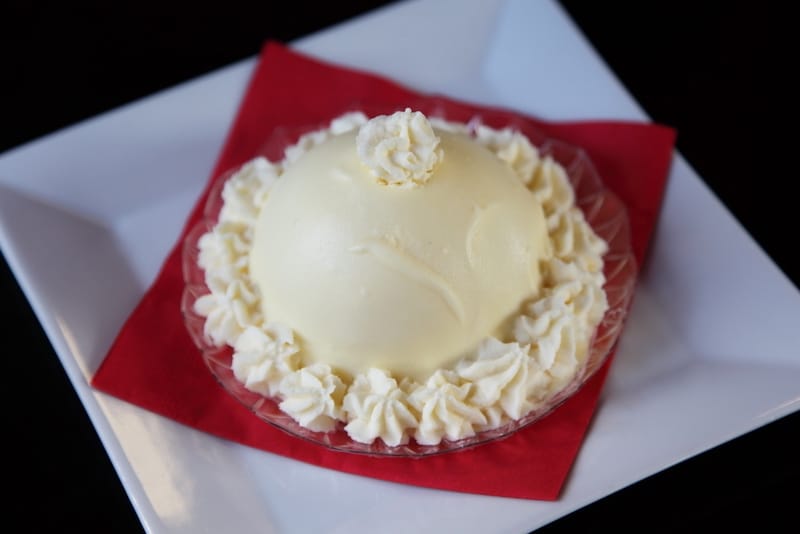
Eventually, Luca and Caterina discovered that a popular new television series (Stanley Tucci: Searching for Italy), focused on the food of Italy, had started the ball rolling. The premiere episode paid a visit to the citrus-rich Amalfi Coast and featured delizia al limone. With a few taps on their computer keyboards and mobile phones, lemon-loving New Yorkers homed in on Cerasella as their local source.
We find word of mouth very useful, too, especially when it’s firsthand, and we take heed regarding even relatively humble items. That couple who drove in from Jersey for a coffee, and for a chat – just about everyone who steps into Cerasella makes time to chat – also asked for a croissant on their way out the door. Caterina asked if she should bag it, but the fellow declined. “Don’t worry,” he said, “it’ll be gone by the time we get to the car.”
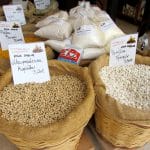 January 27, 2015 Bean Week
January 27, 2015 Bean Week
If there is one single food family that shows off the breadth and extent of the […] Posted in Athens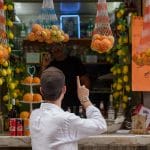 April 26, 2021 The Water Banks of Naples
April 26, 2021 The Water Banks of Naples
Naples has a lot of iconic eateries and shops, but one of the lesser-known city icons is […] Posted in Naples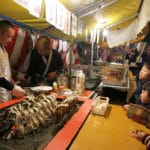 July 12, 2017 Natsu no Shun
July 12, 2017 Natsu no Shun
After the merriment of sakura cherry blossoms has faded, bringing with it the dreary […] Posted in Tokyo
Published on October 25, 2022
Related stories
January 27, 2015
AthensIf there is one single food family that shows off the breadth and extent of the collective Greek culinary imagination, it has to be the humble legume. Together with wheat, beans of all kinds, along with lentils, chickpeas and split peas, form the very foundation of the Greek diet and have done so since Neolithic…
April 26, 2021
NaplesNaples has a lot of iconic eateries and shops, but one of the lesser-known city icons is the kiosk of the fresh-water-seller. Scattered throughout the city, the banks of the acquafrescai – some of which are very famous – sell various mineral waters and refreshments. These kiosks were born to provide relief in the summer…
Join us on a hunt for the best of the season There will be unagi and much more.
July 12, 2017
TokyoAfter the merriment of sakura cherry blossoms has faded, bringing with it the dreary Japanese rainy season, the hot, humid days of July and August follow shortly thereafter. When summer temperatures and the humidity reach a point of sticky and awful, Japanese people tend to change their diet so as to shake off natsubate, the…







































